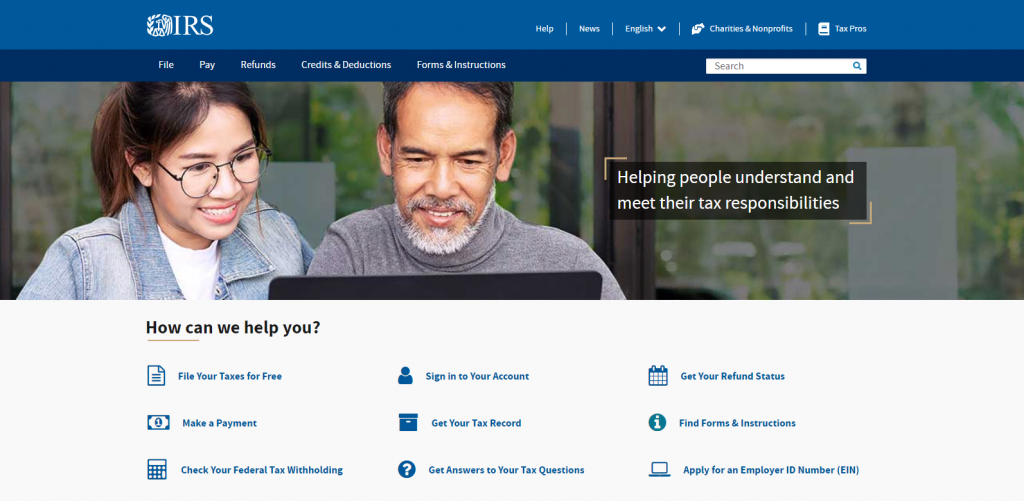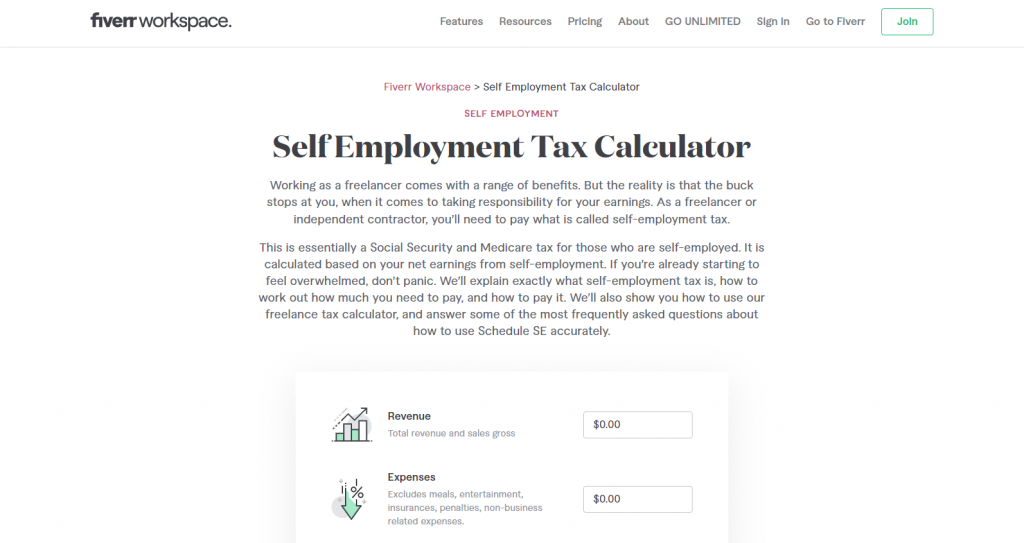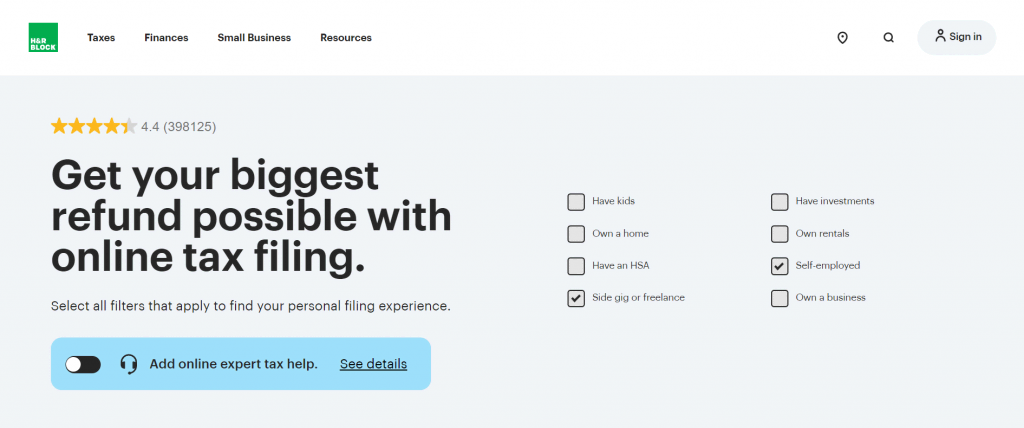Freelance Work Taxes: Understanding Freelance Taxes and How to Pay Them in 2024

Freelancing comes with undeniable perks – from being your own boss and setting your own schedule to choosing the projects that excite you. However, these freedoms can also bring some challenges, like navigating freelance work taxes.
If you’re new to the freelance business, paying and filing taxes yourself may seem daunting. But with some guidance and planning, they can become far less complicated.
This guide will walk you through freelance work taxes – from the different tax categories and tax deductions to how to prepare for them. When tax season rolls around, you can meet your obligations with ease.
Download Web Development Proposal Template
What Are Freelance Work Taxes?
Freelance work taxes are the multiple taxes freelancers need to pay. These may include regular income taxes, self-employment taxes, and additional taxes imposed by local and state governments.
Unlike traditional employees, sole proprietors or independent contractors don’t have these taxes withheld from their paychecks because they are considered self-employed. This places the responsibility on them to manage and pay their taxes as a freelancer.
Important! While this guide aims to provide useful information about freelance work taxes, Hostinger does not offer legal or financial advice. For personalized guidance tailored to your specific situation, please seek the expertise of a tax professional in your area.
Types of Taxes for Freelancers
Understanding which taxes to pay as a freelancer is essential to managing your business expenses.
Whether you must pay all tax types or only specific ones depends on several factors, such as income level, location, and nature of your work.
Let’s break down what the general tax types are.
Income Tax
Freelance income tax is the portion of your earnings you must pay to the government. The difference from regular income tax is that you’ll need to calculate the numbers yourself since no one withholds them for you.
The tax brackets vary by country, but the idea remains consistent. The more you earn, the higher the percentage of your freelance income goes to taxes. For instance, check out Germany’s taxable income brackets:
| Income Bracket for Individual Filers (€) | Income Bracket for Joint Filers (€) | Applicable Tax Rate (%) |
| €0 to €10,908 | €0 to €21,816 | 0% |
| €10,909 to €62,809 | €21,817 to €125,618 | 14%-42% |
| €62,810 to €277,825 | €125,619 to €555,650 | 42% |
| €277,826 and above | €555,651 and above | 45% |
Self-Employment Tax
While income taxes are applicable for all earnings, self-employment taxes typically cover social security and universal healthcare.
As such, this tax isn’t about the earnings bracket but rather a flat rate based on the net profit from your freelance income. For example, the US self-employment tax rate is 15.3%, covering social security and Medicare taxes.
However, if your freelance net earnings are below $400, there’s no need to pay self-employment tax.
State and Local Taxes
Depending on where you’re based, you may also have to pay local, state, and federal taxes as a freelancer. These can add a layer of complexity to your earnings and obligations, so researching what applies to you is essential.
In the US, freelancers must pay state income taxes in most states, except for Alaska, Florida, Nevada, New Hampshire, South Dakota, Tennessee, Texas, Washington, and Wyoming. Some localities may also impose taxes.
Check out the Internal Revenue Service (IRS) website to understand the requirements for local and state taxes based on your area.
Additional Taxes
Besides the previous tax categories, some countries and regions may charge other types of taxes.
For example, Canadian freelancers earning over $30,000 in a tax year must register to collect Goods and Services Tax/Harmonized Sales Tax (GST/HST) for the government. This means they must add GST/HST to their invoices and remit it to the Canadian Revenue Agency.
A similar system exists in EU countries with the Value Added Tax (VAT). Freelancers and self-employed individuals often need to register for VAT, charge it on their invoices, and pay it to their country’s tax authority.
Since every situation is unique, it’s crucial to understand your specific tax obligations and consult with a tax professional if needed.

Freelance Work Tax Deductions and Credits
Freelance tax deductions and credits can reduce your tax bill significantly. Let’s see how they work.
Tax Deductions for Freelancers
Tax deductions reduce the amount of income subject to tax, the value of which depends on your tax bracket.
Let’s say your income is $50,000, and you’re in the 22% tax bracket. Without any deductions, you owe 22% of your earnings in taxes, which is $11,000.
Now, if you have a $1,000 deduction, your taxable income reduces to $49,000. So, you must now pay 22% of $49,000, which is $10,780.
Self-employed individuals can claim deductions for various business expenses, significantly reducing their tax bill.
Here are some common expenses that are subject to freelance tax deduction:
- Home office. If you use part of your home exclusively for freelance work, you can deduct some housing costs, such as rent or mortgage interest, utilities, and repairs.
- Equipment and supplies. The cost of computers, software, office furniture, and other supplies necessary for work are tax-deductible.
- Travel. If you travel for business purposes, such as visiting clients or attending meetings in or out of town, you can deduct the related expenses.
- Advertising and marketing. These include business promotion expenses, like website maintenance, social media advertising, and business cards.
- Professional development. For example, fees for courses, workshops, and conferences that help improve skills in your current business.
- Insurance. If you have insurance policies specifically for your business, such as liability insurance or business interruption insurance, these premiums are often deductible.
- Legal and professional fees. Such as hiring developers, accountants, lawyers, or consultants for a freelance business.
- Membership dues. Fees for professional organizations related to your freelance work can be deductible.
- Business licenses and permits. Some countries deduct costs for any necessary licenses or permits for freelance work.
Tax Credits for Freelancers
Tax credits are another way to minimize overall tax liability. Unlike deductions, tax credits directly lower the amount you owe regardless of the tax bracket.
For instance, if you have to pay $2,000 in taxes but were given a $500 tax credit, your tax bill drops to $1,500.
Here are some examples of tax credits for self-employed individuals:
- Earned Income Tax Credit (US). A refundable tax credit for low- to moderate-income working individuals and couples, particularly those with children.
- Working Tax Credit (UK). Intended to top up the earnings of people on a low income, whether employed or self-employed.
- Small Business Tax Offset (Australia). Claim this offset if you earn income as a sole small business owner.
- Research and Development Incentives (Turkey). Self-employed individuals in this country may qualify for tax credits for research and development activities.
Suggested Reading
How to Pay Freelance Taxes
Understanding tax obligations is just the first step – the next is figuring out how to pay them. Here’s a guide on how to pay taxes on freelance work.
1. Understand the Tax Payment System
First, look into your country’s tax payment system. Besides understanding the different types of taxes, deductions, and credits, it’s also important to note the payment frequency.
The IRS requires US freelancers to make quarterly tax payments. In Germany, however, self-employed individuals should settle them annually.

Another element to pay attention to is the consequences of miscalculation or late payments. Underpayment can lead to fines, whereas overpayment is usually not an issue. You may get a tax refund, or it can be applied to future taxes. Late payments typically result in tax interest.
Being aware of these factors helps in effective freelance tax planning and ensures you comply with tax laws. Go to your local government’s tax department website for the latest and most accurate information.
2. Note the Due Dates and Schedule the Payments
Before tax season, mark your calendar with the due dates for estimated tax payments to avoid late fees.
In the US, freelancers should make quarterly tax payments for income earned during specific periods:
- April 15 for income earned from January 1 to March 31.
- June 15 for income earned from April 1 to May 31.
- September 15 for income earned from June 1 to August 31.
- January 15 for income earned from September 1 to December 31.
For Canadians, the requirement to make annual or quarterly estimated tax payments depends on your net tax owing in previous years.
If it’s more than $3,000 in the current tax year and either of the two previous years, you may have to pay your income tax in installments. For Quebec residents, this threshold is lowered to $1,800.
The due dates for these payments are March 15, June 15, September 15, and December 15.
Note that if a due date falls on a weekend or public holiday in many countries, the deadline will usually shift to the next business day.
Besides setting up reminders to pay estimated taxes, it’s wise to mark down any grace periods or penalties. Always check local rules to know your options. Putting these details in your calendar makes freelance tax filing safer.
A digital calendar or freelance tax software like Freshbooks can make it easy to fulfill freelancer tax responsibilities. Some countries also have their own tax apps, which can notify you when it’s time to make payments.

3. Calculate Your Estimated Tax Liability
Understanding how much you owe is vital in managing freelance tax responsibilities. Start by projecting your taxable income and expenses for the entire tax year, considering various freelance jobs and any valuable tax deductions.
In the US, freelancers can use the IRS tax form 1040-ES to estimate quarterly taxes and reference their clients’ 1099-NEC forms when filing an annual tax return.
Alternatively, use online tax calculators like the ones from NerdWallet and Fiverr.

Candian self-employed individuals can utilize form T2125 to file taxes, while freelancers in India can check out the Advance Tax Calculation forms.
It’s also good to use tax software tailored for freelancers, as it can help automate your freelance tax planning.
Alternatively, use the percentage calculation method to budget for taxes. Follow these steps:
- Estimate your annual income. Make projections on how much you’ll make for the year as a freelance business owner. In this case, let’s use the number $50,000.
- Calculate your tax rates. For illustration purposes, say you’re in the U.S. and must set aside 30% of your earnings for federal, state, income, social security, and Medicare taxes. In our example, that would be $15,000.
- Determine the payment frequency. Break down the annual tax amount into smaller, manageable portions. For example, to pay quarterly estimated taxes, set aside $3,750 every three months or $1,250/month.
Be precise in your calculations to avoid discrepancies when tax season rolls around. Rounding off may seem convenient, but exact figures give a more accurate estimate before you file taxes.
Suggested Reading
How to Calculate Hours Worked: Tracking and Calculating Work Hours
How to Set Up Monthly Retainers + Tips for Creating a Successful Retainer Agreement
4. Pay Your Estimated Taxes
To avoid penalties or interest charges, always make your estimated tax payment on or before each due date within the tax year.
It’s also good to explore all approved payment options available in your country. Common methods include direct bank transfers, online payments, credit cards, and postal money orders.
Additionally, double-check the payment method’s processing time. Bank transfers may take a few days, so plan accordingly to avoid late payments.
If you use a tax app specific to your country, it may include a built-in feature for paying taxes.
5. Keep Accurate Tax Records
Whether you make monthly or quarterly payments, organizing your tax records is vital. This practice will contribute to a smoother freelance tax filing for a personal tax return.
Digital and physical record-keeping each have their own merits. The first offers easier organization and efficient storage. These records must be securely stored to protect against data loss or theft, which is crucial when dealing with freelance jobs taxes.
Holding onto hard copies of important documents like legal contracts and tax returns can be particularly beneficial when digital records are compromised.
This is especially crucial when dealing with tasks like calculating quarterly taxes or preparing an income tax return. Missing documents may result in inaccurate tax liability calculations or even penalties.
6. Adjust Payments as Needed
Adjusting the estimated tax payments may be necessary if your freelance income fluctuates throughout the year.
Monitor your income regularly to calculate freelance taxes accurately. This helps catch significant changes early so you can make changes accordingly.
Keep an eye on deductions and credits, too, as they can significantly affect your annual tax return.
For instance, if you incur tax-deductible business expenses, such as travel costs for work or new equipment purchases, these can lower the taxable income and consequently reduce the amount owed.
When such changes occur, you may pay less tax in the following periods or even receive a tax refund when filing an annual tax return.
However, it’s important to note that this depends on the specific tax rules in your country and the nature of the deductions or credits applicable to you.
To recalculate your taxes for freelance work, use the same tax forms mentioned in step three. This will typically involve revising your estimated taxable income for the year, considering any changes in your earnings or deductions.
If you find that you’ve overpaid in earlier due dates, you can reduce your future estimated tax payments accordingly.
Tax Tips for Freelancers
Navigating the complexities of freelance tax planning can be daunting, especially when tax time rolls around. Check out the following essential freelancer tax tips.
Seek Professional Help
If you find preparing for the upcoming tax year overwhelming, consider seeking the help of a tax professional.
Their expertise can be particularly beneficial for freelance tax compliance. They can also help understand net earnings, optimize income and expenses, and develop tax strategies tailored for small businesses.
To find a tax professional, look for official government directories or associations in your country, like the National Association of Tax Professionals.
Invest in Freelancer Tax Software
When you’re your own boss, you’re responsible for withholding taxes and keeping track of business expenses. Tax software automates these tasks, letting you focus on what you do best.
Say you’re a US freelancer with multiple clients and various income streams. A tax software can automatically estimate quarterly taxes and offer insights on potential deductions.
Here are some recommended tax software for freelancers:
- Freshbooks. Offers tax time and business health reports for staying on top of tax obligations and client management features to centralize all client data.
- H&R Block. Provides an accuracy guarantee for peace of mind, and its comprehensive tax software is available for freelancers working internationally.
- Tax Slayer. Helps find maximum deductions for a bigger tax refund and supports all IRS tax forms.

Separate Personal and Business Finances
Keeping personal and business finances apart can create efficient freelance tax planning, as it will make it easier to track income and expenses.
One practical step is creating a separate savings account for freelance income and expenses.
Unlike personal bank accounts, business accounts often offer features tailored to professional needs, such as higher withdrawal limits or specialized accounting software integrations.
More importantly, it can protect your personal assets if the business faces financial difficulties. Securing a business loan is also much easier should you want to grow your freelance venture into an agency.

Setting up a business bank account generally requires a business identification number. The specific requirements can vary by country and bank.
US citizens generally need their social security number to open a business bank account. In Germany, only proof of identity is necessary.
Include Taxes in Your Invoices
After getting a solid grasp of your freelancer tax obligations, factor those costs into the rates you charge clients.
Include a tax line item when sending client invoices. This ensures that the tax amount is transparent, making it easier to set that money aside in your separate savings account dedicated to taxes.
Set Up a Retirement Plan
Freelancers often miss out on employer-sponsored retirement plans, but you can still save up for them.
A retirement plan can provide financial security and potential tax benefits for freelancers. Many of these plans allow for tax-deductible contributions, which can reduce your net earnings and overall tax obligations.
In the US, freelancers can set up a Simplified Employee Pension (SEP) IRA or a Solo 401(k) for retirement.
Canadian freelancers can have a Registered Retirement Savings Plan (RRSP), which allows for tax-deductible contributions and tax-free growth until withdrawal.
In the UK, freelancers often opt for a Self-Invested Personal Pension (SIPP), offering various investment options and tax relief on contributions.
Stay Informed on Tax Laws
Tax laws and regulations can change, affecting your tax obligations and strategies. Keeping yourself up-to-date helps prepare for the upcoming tax time.
For reliable tax news, follow your local tax department and agencies on social media or subscribe to their newsletters.
Also, check out money management blogs like NerdWallet and expert content creators who talk about freelancing finances, such as Jamie Brindle.
Conclusion
Freelance work taxes are the various types of taxes freelancers must pay on their income. Failure to meet them can lead to penalties and complicate a freelance business.
The primary categories of freelance taxes include self-employment taxes and income taxes. Remember that some countries may have state and local taxes, so always check the local government regulations.
Let’s recap the steps to pay taxes as a freelancer:
- Understand the tax payment system. Besides knowing the different types of taxes, deductions, and credits, take note of the payment deadlines and consequences for missing the due date or under-paying within the appropriate tax time.
- Note the due dates and schedule the payments. Mark tax deadlines on a digital calendar or tax software to avoid late fees.
- Calculate your estimated tax liability. Project net earnings to figure out how much you owe using tax forms, calculators, or software.
- Pay the taxes. Check what payment options are available and keep in mind the processing time.
- Keep accurate records. Document your income and expenses digitally and physically for estimating and filing taxes accurately.
- Adjust payments as needed. Revisit the estimated amounts, deductions, and credits regularly and make changes in the calculations.
Let us know your thoughts on this guide on paying taxes on freelance work – best of luck.
Freelance Work Taxes FAQ
Check out answers to frequently asked questions about applicable taxes on self-employment income.
How Often Do I Need to Pay Freelance Taxes?
Tax payment frequency can vary by country. Freelancers or sole proprietors often pay estimated taxes quarterly in the US, Canada, and Australia. Check your local government’s regulations for more accurate information.
How Is Self-Employment Tax Different From Income Tax?
Generally, self-employment tax covers social security and universal healthcare taxes, which are usually withheld by an employer for traditional employees. In contrast, income tax is based on earnings, and the brackets typically increase as you make more money.
Do I Need to Pay State and Local Taxes as a Freelancer?
The requirement for freelancers to pay state and local taxes varies by country and region.
In the US, most states, except for Alaska, Florida, Nevada, New Hampshire, South Dakota, Tennessee, Texas, Washington, and Wyoming, require state income taxes. Always consult with a tax professional for accurate information.
What Deductions Can I Claim as a Freelancer to Lower My Tax Liability?
Freelancers can claim a variety of deductions to reduce their tax bill. Common examples include business, home office, and travel costs. Keeping accurate records of these expenses can yield various tax benefits.
